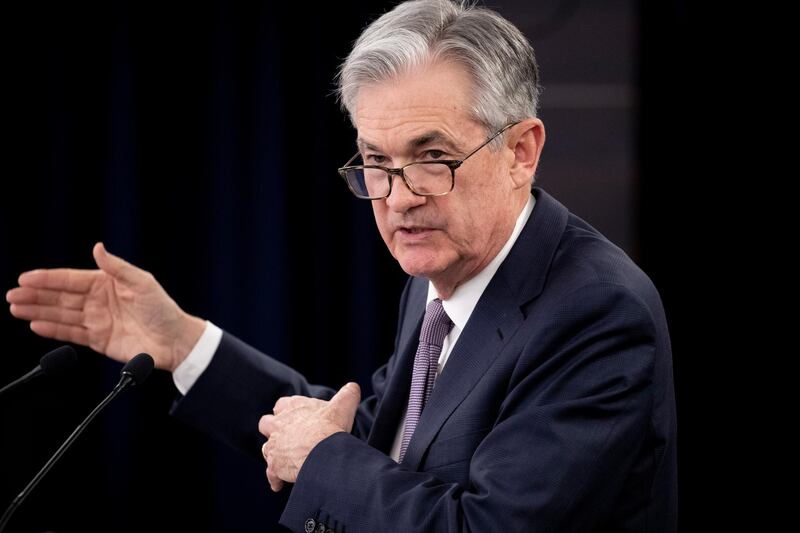The US Federal Reserve left interest rates unchanged and suggested it would hold them steady throughout the election year with the economy solid.
“The committee judges that the current stance of monetary policy is appropriate to support sustained expansion of economic activity, strong labour market conditions and inflation near the committee’s symmetric 2 per cent objective,’’ the Federal Open Market Committee said on Wednesday after a two-day meeting.
Fed funds futures held steady and continued to show a quarter-point cut fully priced in for the first half of 2021.
The Treasury 10-year yield briefly pared its earlier decline before reversing and extending its drop to a new low for the day, as did the Bloomberg dollar index. US stocks edged higher.
The Fed, in its first unanimous vote since May, said it would continue to monitor the effects of data for the economic outlook “including global developments and muted inflation pressures.”
Officials removed an earlier reference to “uncertainties” about the outlook.
Policy makers had been widely expected to leave the target range for the federal funds rate at 1.5 to 1.75 per cent after three straight cuts that helped to calm concerns that the economy could falter.
Officials forecast their policy remains supportive of growth in coming years, even with the US and China yet to reach a trade deal, Brexit’s future in question ahead of Thursday’s UK election and a lacklustre global economic picture.
The committee repeated that economic activity had been rising at a moderate rate with solid job gains.
Chairman Jerome Powell will hold a briefing in Washington at 2.30pm local time.
The record US economic expansion is in its 11th year, driving unemployment to its lowest since 1969 even while failing to sustainably deliver inflation at the Fed’s 2 per cent target.
Officials also released new quarterly forecasts.
They showed the median estimate for the fed funds rate is at 1.6 per cent at the end of 2020, 1.9 per cent in 2021 and 2.1 per cent in 2022.
Thirteen officials expected rates to stay on hold next year, while four consider an increase to be appropriate.
The jobless rate is expected to be 3.5 per cent by late 2020, the same as it is now.
The long-run unemployment rate is seen at 4.1 per cent, down from 4.2 per cent in the September forecast.
Economic growth is forecast to be 2 per cent in 2020 and 1.9 per cent in 2021, both unchanged from the last estimates.
Inflation is predicted to be 2 per cent in 2021, unchanged from the prior projection.
Mr Powell will mark his second anniversary as Fed chairman in February.
He has endured attacks from US President Donald Trump, who picked him for the job but has called Fed policies “ridiculous’’ and “pathetic’’, and demanded steeper rate cuts.
Now, after decisively loosening monetary policy following rate rises in 2018, Mr Powell has a chance to achieve a soft landing.
While factory gauges suggest that segment of the economy is in a slump, Fed officials say they are counting on consumer spending to keep the expansion going.
Wages are rising faster than inflation, and employers continue to add jobs with non-farm payrolls rising by 266,000 in November.
Economists surveyed by Bloomberg expect growth to cool next year but remain near the long-run trend.
The Fed’s rate cuts have also eased borrowing costs and pushed stock prices to record highs, which could support greater spending by boosting wealth and lifting confidence.






